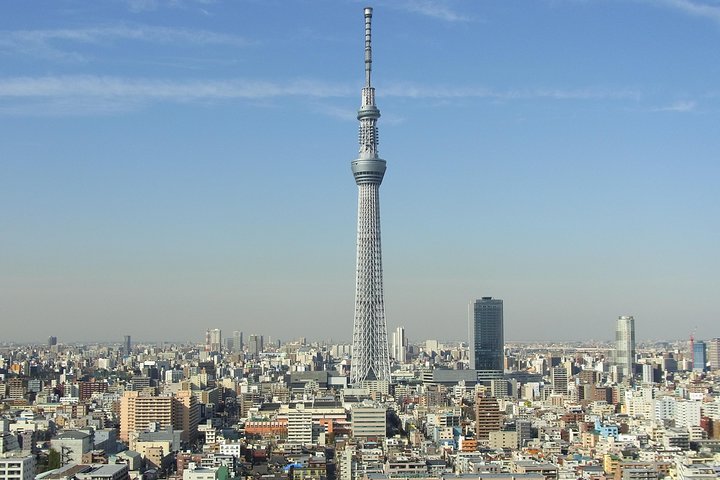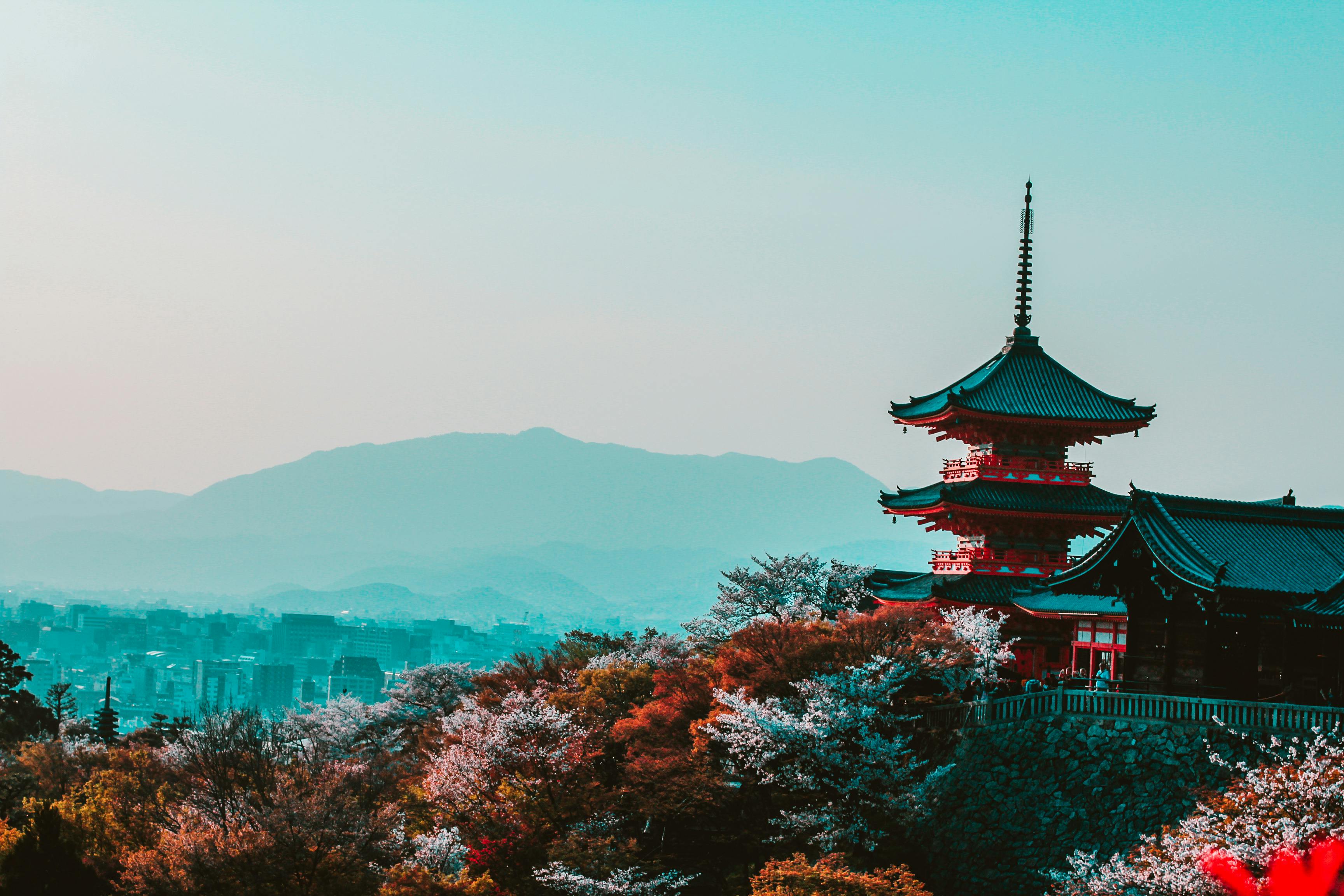7 Days in Japan: Tokyo Energy and Kyoto Elegance (with Mt. Fuji Day Trip)
Japan balances old and new with enviable ease. Samurai castles and incense-swirled shrines coexist with robot cafés and whisper-quiet bullet trains. In one week, you’ll taste regional dishes, ride the Shinkansen, and meet two faces of the country: Tokyo’s kinetic modernity and Kyoto’s contemplative grace.
From lantern-lit lanes in Gion to the neon blaze of Shibuya Crossing, this itinerary guides you through must-see landmarks and local favorites. Expect market breakfasts, riverside strolls, soaring city views, and a day devoted to Mt. Fuji and Hakone’s hot-spring country.
Practical notes: Airports include Haneda (closest to Tokyo) and Narita; many shops accept cards, but small eateries may prefer cash. Grab an IC card (Suica/PASMO or mobile wallet equivalent) for subways and convenience stores, and reserve popular restaurants when you can—dining is half the adventure.
Tokyo
Tokyo is a mosaic of micro-neighborhoods: sumo stables in Ryogoku, indie cafés in Nakameguro, fashion-forward Harajuku, and temple-filled Asakusa. It’s a city that rewards curiosity—turn down an alley and you might find a tiny eight-seat ramen-ya or a 100-year-old kissaten pouring siphon coffee.
- Top sights: Meiji Shrine’s forest path, Asakusa’s Senso-ji, the view from Tokyo Skytree, and the spectacle of Shibuya Crossing.
- Food moments: A tuna belly bite at Tsukiji Outer Market, smoky yakitori in Omoide Yokocho, and yuzu-scented ramen at AFURI.
- Fun fact: Tokyo’s subway carries more than eight million riders daily—and still runs to-the-minute precise.
Where to stay (Tokyo): Browse VRBO Tokyo homes or compare hotels on Hotels.com Tokyo. Standout picks: The Peninsula Tokyo (imperial garden views), Hotel Gracery Shinjuku (fun, central, with Godzilla nods), Hilton Tokyo Bay (great for Disney), The Ritz-Carlton, Tokyo (sky-high luxury), Aman Tokyo (serene modern ryokan vibe), Hotel Sunroute Plaza Shinjuku (value near transit), and Keio Plaza Hotel Tokyo (family-friendly facilities).
Getting in: Search flights to Tokyo (HND/NRT) on Trip.com Flights or Kiwi.com. For intercity rail, use Trip.com Trains.
Day 1: Arrival, Shibuya pulse, Shinjuku lights
Afternoon: Land and check in. Shake off jet lag with a Shibuya loop: cross the famous scramble (a beacon of Tokyo since the 1930s department-store boom), then peek into the Shibuya Station rooftop garden for a panoramic pause. Coffee at The Roastery by NOZY (single-origin pour-overs) or Onibus Nakameguro (quiet alley hideaway).
Evening: Dinner in an izakaya—think Japan’s cozy pub-meets-tapas. Try Nabezo (shabu-shabu with quality wagyu and vegetables) or Uogashi Nihon-Ichi (standing sushi; order a seasonal trio). Afterwards, wander Omoide Yokocho’s narrow lanes for charcoal-grilled yakitori; cap the night with a highball at a snug bar like Ben Fiddich (herbal, bartender-driven cocktails).
Day 2: Tokyo in a day (guided highlights)
Maximize your time with a comprehensive city tour including Meiji Shrine, Asakusa’s Senso-ji, and a Skytree ascent—great context for first-time visitors and families.

Dinner idea: Slurp signature yuzu-shio bowls at AFURI Harajuku, then stroll Omotesando’s cedar-lined Cat Street for indie boutiques and gelato.
Day 3: Markets, old Tokyo, and sumo culture
Morning: Meet your guide for a deep dive into seafood traditions at Tsukiji Outer Market—sample tamagoyaki (sweet omelet), grilled scallops, and tuna skewers while learning market lore.
Tokyo Tsukiji Fish Market Food and Culture Walking Tour

Afternoon: Wander Asakusa’s Nakamise shopping street for rice crackers and fans before paying respects at Senso-ji. Ride or walk to Tokyo Skytree for a glass-floor view across the Kanto plain.
Evening: Immerse in Japan’s national sport history with a stage show that explains rituals, techniques, and wrestler life—plus a comforting chicken hot pot (chanko nabe), the classic sumo staple.
Tokyo Sumo Entertainment Show with Chicken Hot Pot and Photo

Late dinner nearby: Tempura Daikokuya (legendary Asakusa tempura) or monjayaki on Tsukishima’s Monja Street for a Tokyo-born savory pancake cooked at your table.
Day 4: Mt. Fuji and Hakone day trip
Trade skyscrapers for mountain air. Visit Mt. Fuji’s 5th Station (weather permitting), cruise Lake Ashi beneath cedar-clad slopes, and ride the Hakone Ropeway over sulfur vents before zipping back on the Shinkansen. It’s the classic Fuji experience in one efficient day.
Mt Fuji and Hakone 1-Day Bus Tour Return by Bullet Train

Back in Tokyo: Celebrate with tonkotsu ramen at Ichiran (individual booths, rich broth) or a multi-skewer yakitori set at Torishiki-style shops; pair with a crisp lager.
Kyoto
Kyoto was Japan’s imperial heart for over a thousand years. Today, vermilion shrine gates, rock gardens, and wooden machiya townhouses preserve an elegance that seems to slow time itself.
- Top sights: Fushimi Inari’s endless torii, Kiyomizu-dera’s timber stage, Arashiyama Bamboo Grove, and the gilt shimmer of Kinkaku-ji.
- Dining: Kaiseki (seasonal haute cuisine), tofu and yuba specialties, matcha sweets, and delicate Kyoto-style sushi (saba-zushi).
- Fun fact: The Gion district still nurtures geiko and maiko arts—dance, shamisen, tea ceremony—passed down for generations.
Where to stay (Kyoto): See VRBO Kyoto stays and Hotels.com Kyoto. Recommendations: The Ritz-Carlton, Kyoto (riverside refinement), Hotel M's Plus Shijo Omiya (value and transit), Kyoto Tokyu Hotel (quiet comfort), Piece Hostel Sanjo (social and sleek), Kyoto Brighton Hotel, and Hotel M's Est Shijo Karasuma.
Tokyo → Kyoto (Day 5, morning): Take the Tokaido Shinkansen (Nozomi) from Tokyo Station to Kyoto Station: about 2 hr 15 min, reserved seats typically $95–$115 one-way. Book on Trip.com Trains. Trains depart frequently; aim for a morning departure.
Day 5: Travel to Kyoto, Gion and Higashiyama
Morning: Board an early Shinkansen; grab an ekiben (station bento) featuring regional bites—try karaage chicken, pickles, and Kyoto-style saba sushi. Check into your hotel and drop bags.
Afternoon: Walk Ninenzaka and Sannenzaka’s stone lanes to Kiyomizu-dera; the veranda has framed Kyoto since 1633. Snack stops: yatsuhashi (cinnamon mochi) and matcha soft serve around Yasaka Pagoda.
Evening: Join a story-rich walk in Gion to learn how geiko and maiko hone classical arts—and the etiquette that sustains this world.
Kyoto Gion Geisha District Walking Tour - The Stories of Geisha

Dinner: Try obanzai (Kyoto home cooking) at a small izakaya along Kiyamachi, or savor charcoal-grilled yakitori paired with local nihonshu from Fushimi.
Day 6: Kyoto icons in one go
Cover the greatest hits—Fushimi Inari’s red gates, Kinkaku-ji’s Golden Pavilion, and Arashiyama’s bamboo—without juggling buses. This one-day coach tour is efficient and ideal if you prefer guided context.

Evening table ideas: Gion Nanba for seasonal kaiseki, Izuju for classic pressed mackerel sushi, or Gogyo’s “burnt miso” ramen—deeply caramelized and uniquely Kyoto.
Day 7: Arashiyama calm, Nishiki tastes, departure
Morning: Beat the crowds at Arashiyama Bamboo Grove near sunrise, then stroll Tenryu-ji’s pond garden. Coffee at % Arabica by the Katsura River. If you prefer a tofu-focused lunch, Yudofu near temple gates is a Kyoto staple—silky, soothing, and seasonal.
Afternoon: Head to Nishiki Market for last bites: takoyaki, pickled vegetables (shibazuke), yuba croquettes, and fluffy tamagoyaki. Pick up tea from Uji growers and a hand-forged knife from a venerable workshop on nearby Teramachi. Depart in the afternoon: fly from Kansai (KIX) or Itami (ITM) via Trip.com Flights, or return to Tokyo by Shinkansen using Trip.com Trains (about 2 hr 15 min).
Evening: If time allows before your flight, toast the trip with a matcha parfait in Gion or a final bowl of handmade udon—Kansai’s dashi broth is delicate and aromatic.
Optional add-ons and swaps
- Prefer a private, customized city day? In Tokyo, consider a guide who adapts to your interests, from pop culture to gardens: Tokyo 6hr Private Tour with Government-Licensed Guide
- Food lovers staying longer in Tokyo: an evening Shinjuku tasting walk that hits four local joints and 13 dishes is a lively way to graze: Tokyo: Shinjuku Food Tour (13 Dishes at 4 Local Eateries)
Daily dining cheat sheet (quick picks)
- Tokyo coffee/breakfast: The Roastery by NOZY (Cat Street), Onibus Coffee (Nakameguro), Kayaba Coffee (retro vibes in Yanaka), melon-pan from Asakusa Kagetsudo.
- Tokyo lunches: Udon Shin (handmade udon in Shinjuku), AFURI (yuzu ramen), Tendon Tenya (tempura rice bowls), Sushi Zanmai (Tsukiji branch; solid value).
- Tokyo dinners: Nabezo (shabu-shabu), Uogashi Nihon-Ichi (standing sushi), Ebisu Yokocho for shared-plate hopping, Ichiran or Ippudo for late-night ramen.
- Kyoto breakfast/coffee: % Arabica (Higashiyama/Arashiyama), Inoda Coffee (old-school), Smart Coffee (thick toast and eggs).
- Kyoto lunches: Yudofu in Arashiyama, Nishiki Market stalls, Omen for hearty udon, Honke Owariya for soba with centuries of history.
- Kyoto dinners: Gion Nanba (kaiseki), Izuju (pressed sushi), Torito (yakitori), Okonomiyaki Katsu (hearty Kansai favorite).
Transit tips
- IC cards (Suica/PASMO) work on most trains, subways, and buses; load in stations and convenience stores. Typical subway rides: $1.30–$2.50.
- Shinkansen seat reservations are recommended during peak seasons; arrive 15–20 minutes early to find your car and pick up snacks.
- Taxis are safe and easy; late-night surcharges apply. Many accept cards, but keep some cash handy.
In seven days you’ll sample the spectrum of Japan—city buzz, mountain vistas, and temple stillness—without rushing. Keep this guide at hand for routes, picks, and context; it’s the backbone to return trips when you’re ready for Osaka’s street food or a Hokkaido snowy escape.

